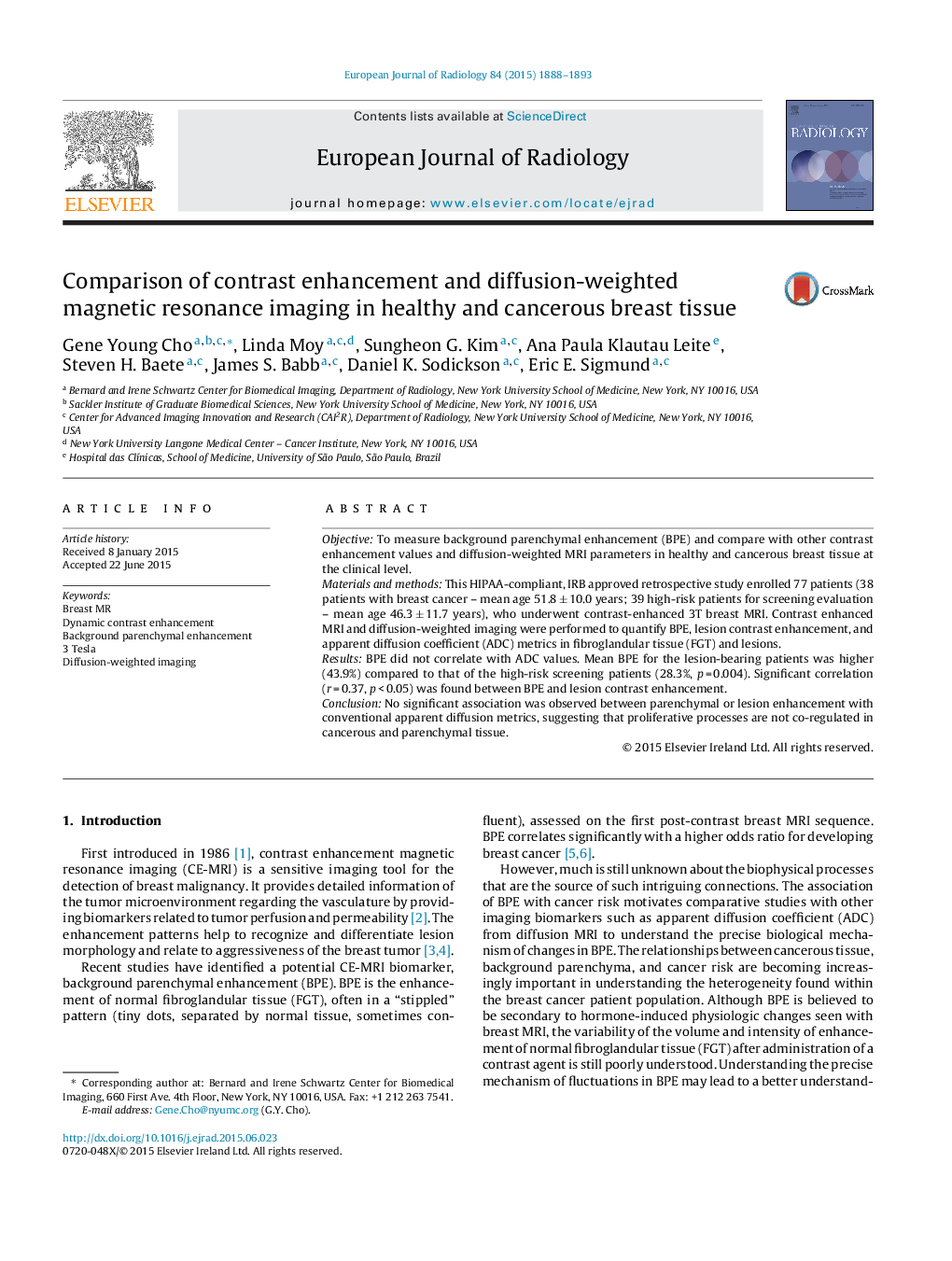| Article ID | Journal | Published Year | Pages | File Type |
|---|---|---|---|---|
| 4225167 | European Journal of Radiology | 2015 | 6 Pages |
•Comparison of background parenchymal enhancement (BPE) values showed that lesion-bearing breast cancer patients had higher values than that of high-risk screening patients.•Significant correlation was found between BPE and lesion contrast enhancement values.•No relationship was observed between ADC with BPE or lesion contrast enhancement values.•BPE negatively correlates with MRI fibroglandular tissue.•Higher BPE values maybe be influenced by angiogenic signaling factors.
ObjectiveTo measure background parenchymal enhancement (BPE) and compare with other contrast enhancement values and diffusion-weighted MRI parameters in healthy and cancerous breast tissue at the clinical level.Materials and methodsThis HIPAA-compliant, IRB approved retrospective study enrolled 77 patients (38 patients with breast cancer – mean age 51.8 ± 10.0 years; 39 high-risk patients for screening evaluation – mean age 46.3 ± 11.7 years), who underwent contrast-enhanced 3T breast MRI. Contrast enhanced MRI and diffusion-weighted imaging were performed to quantify BPE, lesion contrast enhancement, and apparent diffusion coefficient (ADC) metrics in fibroglandular tissue (FGT) and lesions.ResultsBPE did not correlate with ADC values. Mean BPE for the lesion-bearing patients was higher (43.9%) compared to that of the high-risk screening patients (28.3%, p = 0.004). Significant correlation (r = 0.37, p < 0.05) was found between BPE and lesion contrast enhancement.ConclusionNo significant association was observed between parenchymal or lesion enhancement with conventional apparent diffusion metrics, suggesting that proliferative processes are not co-regulated in cancerous and parenchymal tissue.
